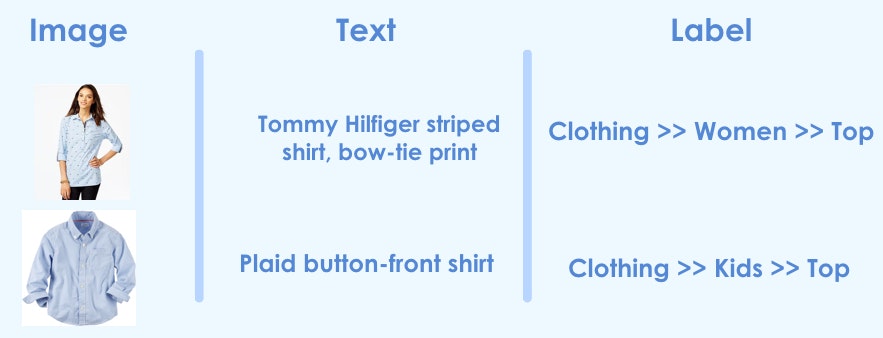記事「超簡単 Kerasで複数Input統合モデル」で、複数Inputに対応する方法を書きました。当記事では、複数InputでImageDataGeneratorを使う方法を紹介します。
ImageDataGeneratorは、画像水増しを手軽にできる非常に便利なクラスで、ググるとわかりやすいページがたくさん出てくるのでここでは言及しません。
ImageDataGeneratorを使うことで、下図(リンク先)のようなことがやりやすくなります。

処理概要
以下の2種類のInputをするモデルを想定。
- 16×16グレースケール画像
- 3文字の数値(テキストを数値化した想定です。3文字という少なさが非現実的ですが、実際に使う場合には増やせばいいだけなのでこの程度)
両値の生成に乱数を使っているため、実際にデータの意味はありません。さらにはモデル定義もいい加減です。
処理プログラム
プログラム全体はGitHubを参照ください。
1. ライブラリインポート
主にnumpyとtensorflowに統合されているkerasを使います。ピュアなkerasでも問題なく、インポート元を変えるだけです。
from random import random
from math import ceil
import matplotlib.pyplot as plt
from tensorflow.keras.layers import Input, concatenate, Dense, Conv2D, MaxPooling2D, Flatten, SimpleRNN
from tensorflow.keras.models import Model, Sequential
from tensorflow.keras.preprocessing import image
from tensorflow.python.keras.utils import np_utils
from tensorflow.python.keras.utils.vis_utils import plot_model
import numpy as np
2. 前処理
2.1. データ作成
下記の3種類のデータを4つ生成します。
説明変数1(x_image):16×16グレースケール画像
説明変数2(x_text):3文字の数値化されたテキスト
目的変数(y_train):4種類のラベルOne-Hot Encoding形式
NUM_DATA = 4 # Number of data
x_image = np.random.rand(NUM_DATA, 16, 16, 1) # dummy gray scale image as random value
x_text = np.random.randint(0, 10, (NUM_DATA, 3, 1)) # dummy text
y_train = np.arange(NUM_DATA).reshape(NUM_DATA, 1) # dummy label
y_train = np_utils.to_categorical(y_train) # to one hot-encoding
2.2. Generator関数定義
Generatorの関数を定義します。この関数の定義方法を調べるのに時間がかかりました。
通常、flow関数で受け取る値はラベル(目的変数)ですが、今回はこれを行数(x_index)にします。そして受け取った行数を使ってテキスト(x_text)とラベル(y_train)をこの関数で返すようにします。
# Generator for 2 input
def gen_flow_for_two_inputs(datagen, batch, x_image, x_text, y_train, shuffle=True):
"""
Args:
datagen(image.ImageDataGenerator): data generator
batch(int): batch size
x_image(np.ndarray): image array for input
x_text(np.ndarray): text array for input
y_train(np.ndarray): label array for output
shuffle(bool): bool to shuffle data
"""
# Create index
x_index = np.arange(x_image.shape[0])
# Pass index to the 2nd parameter instead of labels
batch = datagen.flow(x_image, x_index, batch_size=batch, shuffle=shuffle)
while True:
batch_image, batch_index = batch.next()
# Use index values for text(x_text) and labels(y_train)
yield [batch_image, x_text[batch_index]], y_train[batch_index]
Generator関数をチェックしてみます。
sample_datagen = image.ImageDataGenerator() # data generator for checking generator
gen_flow = gen_flow_for_two_inputs(sample_datagen, 2, x_image, x_text, y_train, False)
# check generator
for i, batch in enumerate(gen_flow):
print(i, '-----')
print(batch[0][0].shape)
print(batch[0][1].shape)
print(batch[1].shape)
print(batch[1])
if i == 1:
break
One-Hot Encoding形式のラベル(目的変数)を意味する配列が1, 2, 3, 4となっているのがわかります。
0 -----
(2, 16, 16, 1)
(2, 3, 1)
(2, 4)
[[1. 0. 0. 0.]
[0. 1. 0. 0.]]
1 -----
(2, 16, 16, 1)
(2, 3, 1)
(2, 4)
[[0. 0. 1. 0.]
[0. 0. 0. 1.]]
3. モデル定義
画像とテキストの2つをInputとして統合するモデルを定義します。
今回はEmbeddingレイヤーを使っていないので大丈夫ですが、Embeddingレイヤーを使った場合、mask_zeroをTrueにできないので注意してください。これはmaskingをサポートしていないFlattenレイヤーがあるためです。
# define two sets of inputs
input_image = Input(shape=(16, 16 ,1,))
input_text = Input(shape=(3, 1, ))
# image input
model_image = Conv2D(32, kernel_size=(4, 4), activation='relu')(input_image)
model_image = MaxPooling2D(pool_size=(2, 2))(model_image)
model_image = Flatten()(model_image)
model_image = Model(inputs=input_image, outputs=model_image)
# text input
# Be careful that Embedding with mask_zero and Flatten cannot coexist
model_text = SimpleRNN(16, return_sequences=True)(input_text)
model_text = Flatten()(model_text)
model_text = Model(inputs=input_text, outputs=model_text)
# Image and text combined
combined = concatenate([model_image.output, model_text.output])
final = Dense(32, activation="relu")(combined)
final = Dense(4, activation="sigmoid")(final)
model = Model(inputs=[model_image.input, model_text.input], outputs=final)
model.compile(loss='categorical_crossentropy', optimizer='adam', metrics=['acc'])
model.summary()
4. 訓練実行
Generator関数の場合は、fit関数ではなくfit_generator関数を使って訓練実行です。steps_per_epochの値はデータ数とバッチサイズから計算しています。
申し訳程度にImageDataGeneratorで画像水増しをしています。
train_datagen = image.ImageDataGenerator(
rotation_range=10., # rotation angle
rescale=1/255
)
EPOCH = 10
BATCH = 2
history = model.fit_generator(
generator=gen_flow_for_two_inputs(train_datagen, BATCH, x_image, x_text, y_train),
steps=ceil(x_image.shape[0] / BATCH),
epochs=EPOCH
)
5. 評価
評価時にはevaluate関数でなく、evaluate_generator関数を使います。評価時に画像水増ししません。
test_datagen = image.ImageDataGenerator(rescale=1/255)
history = model.evaluate_generator(
generator=gen_flow_for_two_inputs(test_datagen, BATCH, x_image, x_text, y_train),
steps=ceil(x_image.shape[0] / BATCH)
)
6. 予測
評価時にはpredict関数ではなく、predict_generator関数を使います。
データは評価時と同じものを流用しています。また、今回はこのあと予測結果の答え合わせをするので、引数shuffleをFalseにしています。
# shuffle should be false for prediction, since result goes with labels
y_pred = model.predict_generator(
generator=gen_flow_for_two_inputs(test_datagen, BATCH, x_image, x_text, y_train, shuffle=False),
steps=ceil(x_image.shape[0] / BATCH)
)
予測の答え合わせ。scikit-learnを使ってClassification Reportと混合行列を出しています。
from sklearn.metrics import classification_report, confusion_matrix
# change from one-hot encoding
y_train_np = np.argmax(y_train, axis=1)
y_pred_np = np.argmax(y_pred, axis=1)
# output classification report and confusion matrix
print(classification_report(y_train_np, y_pred_np))
print(confusion_matrix(y_train_np, y_pred_np))
元データが乱数なので、無意味ですが参考までに結果記載。
precision recall f1-score support
0 1.00 1.00 1.00 1
1 1.00 1.00 1.00 1
2 1.00 1.00 1.00 1
3 1.00 1.00 1.00 1
accuracy 1.00 4
macro avg 1.00 1.00 1.00 4
weighted avg 1.00 1.00 1.00 4
[[1 0 0 0]
[0 1 0 0]
[0 0 1 0]
[0 0 0 1]]
